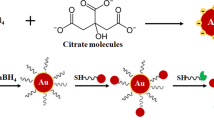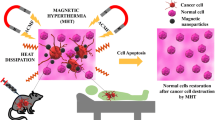Abstract
We developed carriers of a 19F magnetic resonance imaging (19F MRI) agent, capable of responding to the temperature difference for cancer diagnosis. The carriers were based on high melting point (mp) neutral lipids, namely, tripalmitin (TPT) and tristearin (TSR) and triarachidin (TAC). Lipid nano-emulsions (LNEs) containing a fluorine compound, i.e., a modified α-tocopherol (19F-TP), were respectively prepared as TPT-LNE, TSR-LNE, TAC-LNE1, and TAC-LNE2 and studied by 19F NMR spectroscopy. In LNE prepared with soybean oil as a control, the full width at half maximum (FWHM) values of the 19F NMR signal of 19F-TP remained constant at 25, 37, and 42°C, while those of the LNEs prepared from a neutral lipid with a high mp showed a sharp decrease between 25 and 37°C. The magnitude of the decrease followed the order: TPT-LNE < TSR-LNE < TAC-LNE1. However, TAC-LNE2, for which the amount of encapsulated 19F-TP was one third less than that of TAC-LNE1, showed a sharp decline in the FWHM between 37 and 42°C. To examine these changes, the 19F spin-lattice (T1) and spin-spin (T2) relaxation times of 19F-TP were measured. TAC-LNE2 in particular showed a substantial change in its T2 value between 37 and 42°C compared with the change of its T1 value. This result was attributed to activation of the molecular motion of 19F-TP in TAC-LNE2 from 37 to 42°C. Thus, TAC-LNE showed potential for use as a carrier for cancer diagnosis using 19F MRI.





Similar content being viewed by others
References
Caravan P, Ellison JJ, McMurry TJ, Lauffer RB. Gadolinium (III) chelates as MRI contrast agents: structure, dynamics, and applications. Chem Rev. 1999;99:2293–352.
Kobayashi H, Brechbiel MW. Nano-sized MRI contrast agents with dendrimer cores. Adv Drug Deliv Rev. 2005;57:2271–86.
Dechent JF, Buljubasich L, Schreiber LM, Spiess HW, Munnemann K. Proton magnetic resonance imaging with parahydrogen induced polarization. Phys Chem Chem Phys. 2012;14:2346–52.
Ruiz-Cabello J, Barnett BP, Bottomley PA, Bulte JWM. Fluorine (19F) MRS and MRI in biomedicine. NMR Biomed. 2011;24:114–29.
Knight JG, Edwards PG, Paisey SJ. Fluorinated contrast agents for magnetic resonance imaging; a review of recent developments. RSC Adv. 2011;1:1415–25.
Matsumura Y, Maeda H. A new concept for macromolecular therapeutics in cancer chemotherapy: mechanism of tumoritropic accumulation of proteins and the antitumor agent SMANCS. Cancer Res. 1986;46:6387–92.
Seki J, Sasaki H, Doi M, Yoshikawa H, Takahashi Y, Yamane S, et al. Lipid nano-sphere (LNS), a protein-free analogue of lipoproteins, as a novel drug carrier for parenteral administration. J Control Release. 1994;28:352–3.
Miyamoto M, Hirano K, Ichikawa H, Fukumori Y, Akine Y, Tokuuye K. Preparation of gadolinium-containing emulsions stabilized with phosphatidylcholine-surfactant mixtures for neutron-capture therapy. Chem Pharm Bull. 1999;47:203–8.
Ahmed N, Jaafar-Maalej C, Mohamed M, Fessi H, Elaissari A. New oil-in-water magnetic emulsion as contrast agent for in vivo magnetic resonance imaging (MRI). J Biomed Nanotechnol. 2013;9:1579–85.
Sigg SJ, Santini F, Najer A, Richard PU, Meier WP, Palivan CG. Nanoparticle-based highly sensitive MRI contrast agents with enhanced relaxivity in reductive milieu. Chem Commun. 2016;52:9937–40.
Bouchoucha M, van Heeswijk RB, Gossuin Y, Kleitz F, Fortin M–A. Fluorinated mesoporous silica nanoparticles for binuclear probes in 1H and 19F magnetic resonance imaging. Langmuir. 2017;33:10531–42.
Takegami S, Kitamura K, Kawada H, Matsumoto Y, Kitade T, Ishida H, et al. Preparation and characterization of a new lipid nano-emulsion containing two cosurfactants, sodium palmitate for droplet size reduction and sucrose palmitate for stability enhancement. Chem Pharm Bull. 2008;56:1097–102.
Takegami S, Takara K, Tanaka S, Yamamoto K, Hori M, Yokoyama T, et al. Characterization, in vitro cytotoxicity and cellular accumulation of paclitaxel-loaded lipid nano-emulsions. J Microencapsul. 2010;27:453–9.
Takegami S, Kitamura K, Ohsugi M, Konishi A, Kitade T. 19F nuclear magnetic resonance spectrometric determination of the partition coefficients of flutamide and nilutamide (antiprostate cancer drugs) in a lipid nano-emulsion and prediction of its encapsulation efficiency for the drugs. AAPS PhamSciTech. 2016;17:1500–6.
Takegami S, Katsumi H, Asai K, Fujii D, Fujimoto T, Kawakami H, et al. Application of 19F NMR spectroscopy using a novel α-tocopherol derivative as a 19F NMR probe for a pharmacokinetic study of lipid nano-emulsions in mice. Pharm Anal Acta. 2015;6:339.
Wike-Hooley JL, Haveman J, Reinhold HS. The relevance of tumour pH to the treatment of malignant disease. Radiother Oncol. 1984;2:343–66.
Gerweck LE, Seetharaman K. Cellular pH gradient in tumor versus normal tissue: potential exploitation for the treatment of cancer. Cancer Res. 1996;56:1194–8.
Oishi M, Sumitani S, Nagasaki Y. On-off regulation of 19F magnetic resonance signals based on pH-sensitive PEGylated nanogels for potential tumor-specific smart 19F MRI probes. Bioconjug Chem. 2007;18:1379–82.
Wang K, Peng H, Thurecht KJ, Puttick S, Whittaker AK. pH-responsive star polymer nanoparticles: potential 19F MRI contrast agents for tumor-selective imaging. Polym Chem. 2013;4:4480–9.
Monti M, Brandt L, Ikomi-Kumm J, Olsson H. Microcalorimetric investigation of cell metabolism in tumour cells from patients with non-Hodgkin lymphoma (NHL). Scand J Haematol. 1986;36:353–7.
Okabe K, Inada N, Gota C, Harada Y, Funatsu T, Uchiyama S. Intracellular temperature mapping with a fluorescent polymeric thermometer and fluorescence lifetime imaging microscopy. Nat Commun. 2012;3:705.
Zhu X, Chen S, Luo Q, Ye C, Liu M, Zhou X. Body temperature sensitive micelles for MRI enhancement. Chem Commun. 2015;51:9085–8.
Araki T, Murayama S, Usui K, Shimada T, Aoki I, Karasawa S. Self-assembly behavior of emissive urea benzene derivatives enables heat-induced accumulation in tumor tissue. Nano Lett. 2017;17:2397–403.
Davis RM, Viglianti BL, Yarmolenko P, Park J-Y, Stauffer P, Needham D, et al. A method to convert MRI images of temperature change into images of absolute temperature in solid tumours. Int J Hyperth. 2013;29:569–81.
Langereis S, Keupp J, van Velthoven JLJ, de Roos IHC, Burdinski D, Pikkemaat JA, et al. A temperature-sensitive liposomal 1H CEST and 19F contrast agent for MR image-guided drug delivery. J Am Chem Soc. 2009;131:1380–1.
Yamaoka K, Tanigawara Y, Nakagawa T, Uno T. A pharmacokinetic analysis program, (multi) for microcomputer. J Pharmacobio-Dyn. 1981;4:879–85.
Rotenberg M, Rubin M, Bor A, Meyuhas D, Talmon Y, Lichtenberg D. Physico-chemical characterization of Intralipid™ emulsions. Biochim Biophys Acta. 1991;1086:265–72.
Sotirhos N, Herslöf B, Kenne L. Quantitative analysis of phospholipids by 31P-NMR. J Lipid Res. 1986;27:386–92.
Calculated using advanced chemistry development (ACD/Labs) software V1.02 (©1994–2017 ACD-Labs).
Unruh T, Bunjcs H, Westesen K, Koch MHJ. Investigations on the melting behaviour of triglyceride nanoparticles. Colloid Polym Sci. 2001;279:398–403.
Povey MJW, Hindle SA, Aarflot A, Hoiland H. Melting point depression of the surface layer in n-alkane emulsions and its implications for fat destabilization in ice cream. Cryst Growth Des. 2006;6:297–301.
Awad TS, Helgason T, Kristbergsson K, Weiss J, Decker EA, McClements DJ. Temperature scanning ultrasonic velocity study of complex thermal transformations in solid lipid nanoparticles. Langmuir. 2008;24:12779–84.
Friebolin H. Basic one- and two-dimensional NMR spectroscopy, Third revised edition, Wiley-Vch, 1998.
Farrar TC, Becker ED. Pulse and Fourier transform NMR, Academic Press, 1971
Funding
This work was partly supported by a subsidy (Grant Number S1311035) from the Ministry of Education, Culture, Sports, Science, and Technology (MEXT)-supported Program for the Strategic Research Foundation at Private Universities, 2013–2018.
Author information
Authors and Affiliations
Corresponding author
Ethics declarations
Conflict of Interest
The authors declare that they have no competing interests.
Electronic Supplementary Material
ESM 1
(DOCX 173 kb)
Rights and permissions
About this article
Cite this article
Iima, R., Takegami, S., Konishi, A. et al. Thermal Behavior of 19F Nuclear Magnetic Resonance Signal of 19F-Containing Compound in Lipid Nano-Emulsion for Potential Tumor Diagnosis. AAPS PharmSciTech 19, 2679–2686 (2018). https://doi.org/10.1208/s12249-018-1102-4
Received:
Accepted:
Published:
Issue Date:
DOI: https://doi.org/10.1208/s12249-018-1102-4




